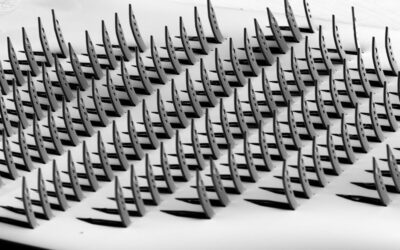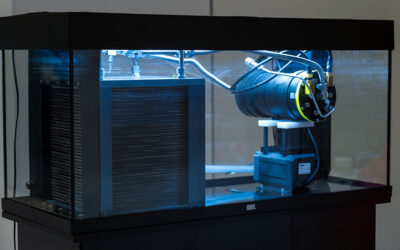Researchers from the Gwangju Institute of Science and Technology in South Korea have introduced a new approach to reducing the energy demand for cooling buildings. They propose replacing conventional window glass with a specially designed layered structure that efficiently dissipates heat while reflecting incoming sunlight, significantly cutting down on air conditioning costs.
“Addressing global climate change and energy crises necessitate the development of zero-energy and emission-free technologies,” wrote the team in their paper published in Advanced Photonics Research. “Conventional cooling systems, accounting for 20% of global energy consumption, contribute to substantial environmental issues such as air pollution and depletion of fossil fuels.”
The problem with standard glass windows is their poor ability to block infrared radiation, which carries a significant amount of heat. They also fail to shield interiors from thermal radiation emitted by surrounding buildings and do not efficiently release heat to the outside environment. This leads to higher indoor temperatures and increased reliance on air conditioning, driving up energy consumption.
While ordinary glass does radiate some heat its efficiency is limited. They typically do not emit strongly across the entire transparency window, making them less effective for cooling the building interiors.
To address this, the researchers designed and simulated a more complex material called a dual-sided radiative cooling glass. This structure consists of a central layer of ordinary glass sandwiched between sub-micrometer layers of indium tin oxide (ITO), a material known for its ability to reflect infrared radiation, preventing it from entering a building and raising indoor temperatures.
On the outer surface, they applied additional thin layers of aluminum oxide and silicon nitride, materials that efficiently radiate heat at wavelengths that pass through Earth’s atmosphere. Specifically, aluminum oxide emits thermal radiation at around 13 micrometers, while silicon nitride does so at 8 micrometers — corresponding to the upper and lower bounds of the atmospheric transparency window. By emitting radiation in this range, the heat escapes directly into space without being absorbed by the atmosphere, preventing further warming.
A key feature of this layered glass is its directional emissivity, meaning the angle at which it radiates heat depending on the thickness of the aluminum oxide and silicon nitride layers, as well as the angle of incoming sunlight. By precisely tuning the thicknesses of these layers the design ensures that most of the emitted heat escapes toward the open sky, rather than being absorbed and re-radiated by nearby objects, such as trees or buildings.
Despite its intricate layered structure, the newly developed glass remains highly transparent to visible light, allowing 72% of sunlight in this range to pass through. This means it can function effectively as a window, maintaining natural lighting inside buildings while providing cooling benefits.
The researchers also evaluated the potential energy savings from installing these windows in typical residential buildings. Their analysis showed that, on a hot summer day, the dual-sided radiative cooling glass could reduce air conditioning energy consumption by up to 40%. In practical terms, this equates to a reduction of 1,500 watts — roughly the same power consumption as an electric kettle or an iron running continuously.
While the findings highlight significant energy-saving potential, the researchers acknowledge that further development will be necessary before the technology can be widely adopted.
“Nonetheless, there is still potential to further improve the directional emission intensity,” they wrote. “One promising approach is adjusting the surface structure of the [aluminum oxide and silicon nitride layers]. Such as this approach, further studies are necessary to enhance the cooling performance and the applicability of vertical-oriented emitters.”
They also emphasize the need for real-world testing. “Moreover, further research that fabricates actual dual-sided radiative cooling glass and measures enclosure cooling performance is essential to validate the applicability of the dual-sided radiative cooling glass in a detailed manner.”
If successfully implemented, this technology could provide a practical and scalable solution to reducing building energy consumption, offering an efficient way to combat rising global temperatures while lowering reliance on conventional cooling systems.
Reference: Hyunkyu Kwak, Do Hyeon Kim, and Young Min Song, Design of Double-Sided Optical Coatings for Space Cooling Through Vertical Windows, Advanced Photonics Research (2025). DOI: 10.1002/adpr.202400205
Feature image credit: Philippsaal on Pixabay

















